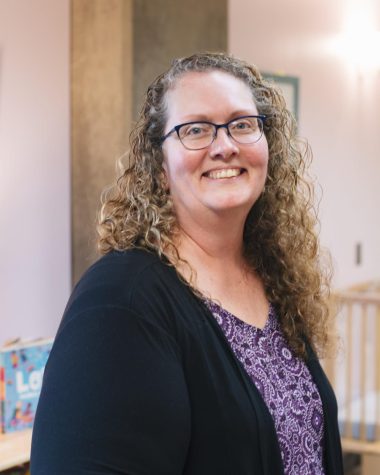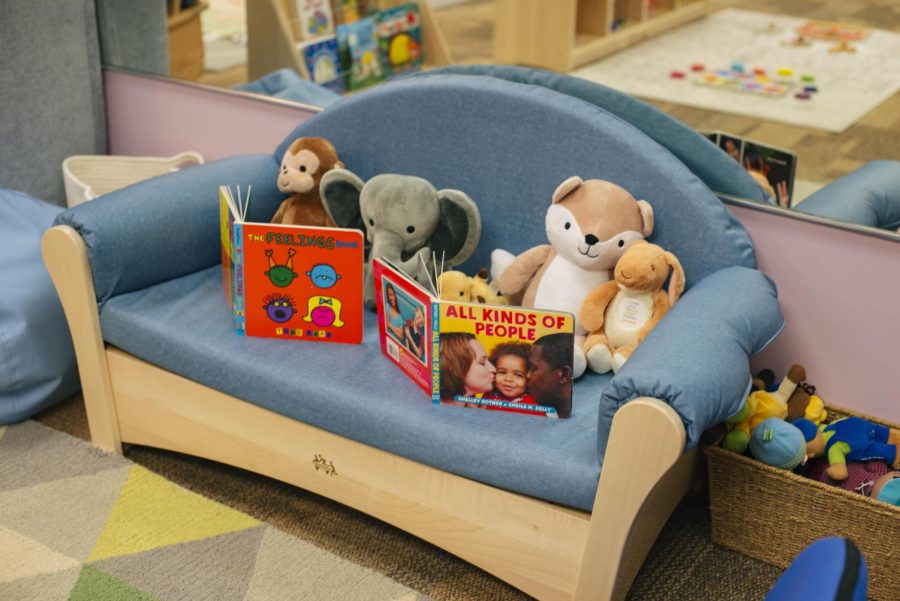Support for student-parents at OSU comes to Dixon
The Dixon Kits Center photographed on December 19, 2022 showcases the center’s variety of interactive learning experiences in Corvallis, Ore. Students are provided with indoor and outdoor learning opportunities even out in the Oregon rain.
January 17, 2023
Oregon State University’s newest childcare program, Dixon Kits, is set to open at the beginning of winter term with the intention of providing student-parents with specialized childcare and lower tuition rates, according to Tania Henry, director of Dixon Kits.
The Dixon Kits program was made possible by the Child Care Access Means Parents in School Grant. The grant supports the participation of low-income parents in postsecondary education through the provision of campus-based childcare services, according to the U.S. Department of Education website.
“CCAMPIS is a federal grant that the Family Resource Center at OSU receives from the federal government to support student parents enrolling in OSU,” said Kristi King, director of the Our Little Village and Student Family Coordinator.
King directs student parents to childcare resources on campus, including Dixon Kits, which will open once winter term begins. The program hours will be Monday through Friday, from 8 a.m. to 4:30 p.m.
Unlike other childcare resources on campus, which are operated by outside vendors, Dixon Kits is operated under OSU. The program’s services are offered to both OSU employees and student-parents. In addition to this, all of the teachers and staff at the Dixon Kits Center are OSU employees.
Because the program is under OSU, the Family Resource Center has a lot more say and control over how they serve the families there and who’s enrolling.
“We have to serve a number of student-parent families with the highest financial needs who have infants and toddlers,” King said. “We did some very targeted outreach to student-parents that we knew that had infants and toddlers that we suspected of having high levels of financial need. They then would go through a process of confirming that.”
The facility has two separate spaces for infants and toddlers. Infants have their own room as well as a changing area and lactation room. Toddlers have their own larger space that caters directly to their learning and growth.
“We will have 12 children altogether, four infants and eight toddlers…We are a sweet little, small center,” Henry said.
The center is set up with various stations that include many different materials for the children to explore their interests. These interests are then observed, and more opportunities are created to nourish each child’s inclination, according to Henry.
“I think people have a misconception about (childcare),” Henry said. “They think we’re just babysitting but no, we’re really intentional.” According to Henry, the program uses an emergent curriculum that provides opportunities for child-development.
Being outside is another part of the curriculum at Dixon Kits.
“We go outside twice a day. We are Oregonians, so being able to be outside in any weather is very important,” Henry said.
The outside area of the center includes turf grass, a toddler-sized playground and a water table customized by Community Playthings. Matching customized furniture can be seen throughout the entire center.
“This provides some agency when the weather is nice,” said Amy Luhn, director of the Family Resource Center. “Toddlers will literally be able to make a decision about whether they want to be inside or outside.”
Before Dixon Kits, the Family Resource Center had only one location at Dixon that provided childcare. Then, a new space opened up in the building.
“We have awesome partners in rec sports,” Luhn said. “When the pandemic happened, we had to close our little space under the stairwell… They asked us if we would be interested in possibly a larger footprint in the rec center.”
“It’s really hard to renovate space to create early care and education capacity when it wasn’t designed for early care,” Luhn said. “It’s such a specialized business.”
According to Luhn, the layouts are unique in infant and toddler programs and it was how the space was already designed, and how minor the renovations would be, that drove their decision to open the center for children up to two and a half years old.
In light of the age limit, Henry said that they are currently working on partnering with the other childcare centers at OSU to create a pipeline for the children to transition into another center when they reach the appropriate age.
While the Dixon Kits program has a capacity of 12 children at all times, that doesn’t necessarily mean they will only accept 12 children into the program. To clarify, some families only need certain days and certain parts of the day covered. This then opens up availability to other families who do need those certain days or time slots.
According to Henry, all of the teachers have their degree, and experience in childcare education and the center will have five teachers altogether.
“We’re paying a compensation that’s akin to the profession which you don’t find out in the community,” Luhn said. “It’s another thing that’s exciting about this program is that we are rolling out a high quality early care and education program that is compensating its workforce for their degree and experience.
There is currently a waitlist for the Dixon Kits program, however, families can reach out to Dixon Kits to receive an application. The Dixon Kits co-pay for student-parents is $200 and for OSU employees $300.
Dixon Kits reserves eight spaces for student-parents and four spaces for OSU employees. If their income qualifies, lower income families will be given higher priority. Student parents are also encouraged to look into Our Little Village, which is the separate free childcare facility also inside Dixon as well as Milne.
















































































































